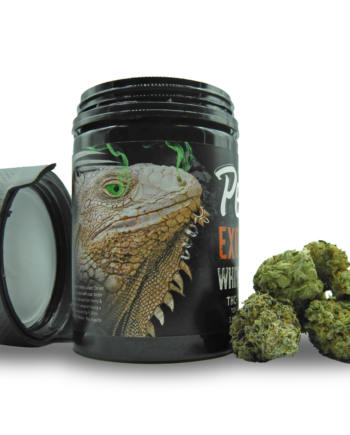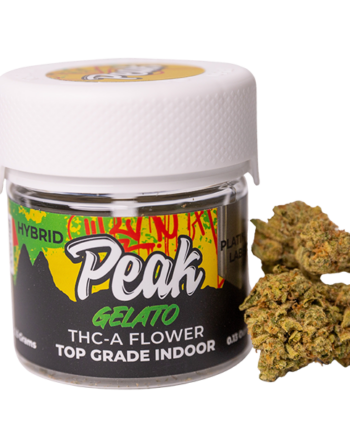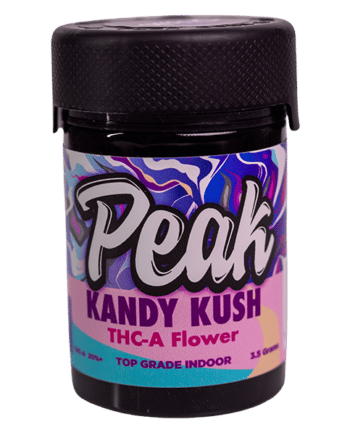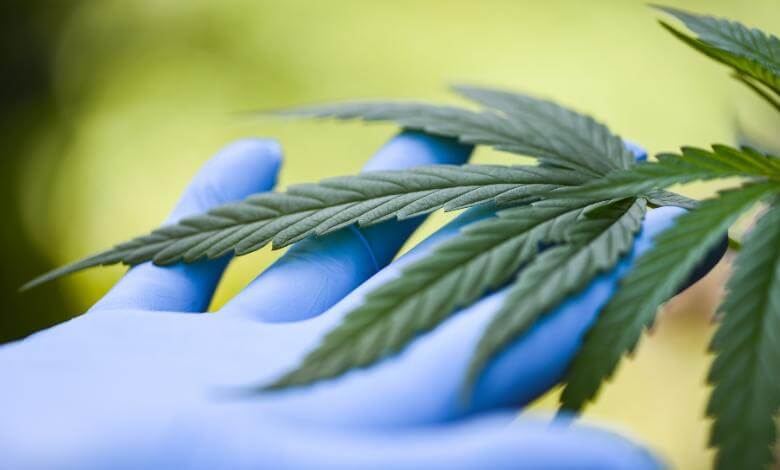Are you interested in how to grow THCA-rich flowers for your own consumption? You have come to the right spot! In this guide, we will delve into the intricacies of increasing THCA flowers and provide you with valuable insights to help you successfully cultivate this potent strain. Discover the steps involved in nurturing THCA-rich plants and harness the power of THCA for your own enjoyment.
Table of Contents:
- THCA: An Overview
- How to Choose the Right Strain
- Creating a Grow Room
- Germination of Seeds
- Vegetative Growth Stage
- Flowering Stage
- The Harvesting Process
- Proper Way to Dry and Cure
- Evaluating the THCA’s Content
- THCA Flower Consumption
- Conclusion
- FAQs about Growing THCA Flower
- What is THCA?
- How Does the THCA Flower Grow Outdoors?
- What Tells Me When My Plants Are Ready to Be Harvested?
- Are Edibles Made from THCA Flowers?
- Can Cannabis Buds Be Dried at What Temperature and Humidity?
THCA: An Overview
THCA, an abbreviation for Tetrahydrocannabinolic Acid, constitutes a fascinating and pivotal cannabinoid within the cannabis plant. Unlike its psychoactive counterpart, THC, THCA is non-psychoactive in its raw form, offering consumers a unique and distinct experience. THC is produced when THCA undergoes decarboxylation in heat or light. However, in its raw, unheated state, THCA boasts a multitude of potential benefits, making it increasingly popular among cannabis enthusiasts and everday users alike. The beneficial potential of THCA is diverse, with a reported array of positive effects, although these effects are not guaranteed and are not approved by the FDA. By gaining insights into how to cultivate THCA-rich flowers, individuals can unlock the full spectrum of benefits that this unique cannabinoid has to offer, providing an exciting avenue for both recreational and medicinal cannabis cultivation.
-
 Peak Exotic THCA Flower$49.99
Peak Exotic THCA Flower$49.99 -
 Peak Platinum THCA Flower 3.5g$60.00
Peak Platinum THCA Flower 3.5g$60.00 -
 Peak High Potency THCA Flower$49.99
Peak High Potency THCA Flower$49.99
How to Choose the Right Strain
Selecting the right strain is the initial crucial step when embarking on growing THCA flowers. Various cannabis strains, such as Durban Poison, ACDC, and Harlequin, are renowned for their elevated THCA content. You should choose your strain based on your growing conditions and expertise as a cultivator. Genetics and growth characteristics play a pivotal role in this decision-making process, as some strains thrive indoors while others flourish outdoors.
Furthermore, some strains seem more resilient to illnesses and pests than others, and vice versa. Evaluating factors like yield, THC, and THCA content is equally important when making your selection, ensuring a successful and tailored cultivation experience.
Creating a Grow Room
After selecting the suitable strain for your THCA flower cultivation, the next crucial step is to prepare the grow room. It is essential to keep your grow room tidy and clean, especially free of pests. Key considerations include adequate ventilation, promoting good air circulation, and ensuring proper lighting. The choice of lighting is of particular importance, with LED lights being a favored option due to their energy efficiency and minimal heat emission. Although they generate more heat and consume more electricity, HID lights, including metal halide and high-pressure sodium lights, are also prevalent. Careful preparation of the grow room sets the stage for a successful THCA flower cultivation journey.
Germination of Seeds
After preparing your grow room, the next step in cultivating THCA flowers is germinating the seeds. Cannabis seeds can be germinated using a variety of techniques, such as the soil method, the rock wool method, and the paper towel method. Paper towels are placed between seeds and kept warm and dark until they sprout using the paper towel method. The soil method involves directly planting seeds into the soil and maintaining soil moisture until germination occurs. In the rockwool method, seeds are placed in moistened rockwool cubes and placed in water-filled trays. Regardless of the chosen method, it is vital to maintain a warm and moist environment until the seeds successfully sprout. For further development, seeds must be transferred to soil or a suitable growing medium once they have germinated.
Vegetative Growth Stage
The growth of leaves characterizes the vegetative stage of cannabis cultivation and stems without the formation of buds. It is crucial to supply the plants with sufficient light, water, and nutrients to support their healthy development during this phase. The duration of the vegetative stage varies, usually 2 to 8 weeks, contingent upon the strain and environmental factors. Vigilant monitoring of the plants is essential during this stage to ensure proper growth and to detect any potential issues, like pests or diseases, in a timely manner.
Flowering Stage
In cannabis cultivation, the flowering stage is when plants start to form buds. Depending on the strain and growing environment, this stage usually lasts 6 to 12 weeks. During this stage, providing the appropriate lighting regimen is crucial. To encourage bud production, many growers use a 12/12 light cycle, which consists of 12 hours of light and 12 hours of darkness every day. Close monitoring of the plants is essential during flowering to ensure their overall health and to promptly identify and address any potential issues, such as pests or diseases. By recognizing their telltale symptoms, you can tell when your plants are ready to harvest.
The Harvesting Process
Harvesting in cannabis cultivation occurs when the buds have reached full maturity, typically within 8 to 12 weeks after the onset of the flowering stage. The harvesting process involves carefully cutting off the buds using scissors or pruning shears, ensuring gentle handling to prevent any damage to the valuable crop.
Proper Way to Dry and Cure
Following the harvest of the buds, the crucial steps of drying and curing come into play. To achieve full flavor and potency, the buds must undergo these processes to eliminate excess moisture. To ensure even drying, the buds must be hung upside down in a dark, well-ventilated space with constant humidity and temperature levels. After drying, the buds are cured by placing them in airtight jars and storing them in a cool, dark place. Periodic opening and airing of the jars allow excess moisture to escape, enhancing the overall quality of the buds.
Evaluating the THCA’s Content
To ascertain the THCA content of your cannabis buds accurately, it’s advisable to utilize testing services offered by specialized labs. These third party labs serve the needs of cannabis farmers and provide insightful information about your buds’ potency. Testing is essential not only for verifying that your buds align with your desired potency levels but also for pinpointing the optimal harvest time for your plants.
-
 Peak Exotic THCA Flower$49.99
Peak Exotic THCA Flower$49.99 -
 Peak Platinum THCA Flower 3.5g$60.00
Peak Platinum THCA Flower 3.5g$60.00 -
 Peak High Potency THCA Flower$49.99
Peak High Potency THCA Flower$49.99
THCA Flower Consumption
THCA flower offers versatile consumption options, including smoking, vaping, and incorporating it into edibles. A cautious approach is advisable, commencing with a small dose and gradually adjusting as required to prevent overconsumption. As important as preserving potency and flavor is proper storage, buds should ideally be kept in an airtight container in a dark, cool place.
Other THCA products that can be found at CannaAid:
Conclusion
Finally, for cannabis enthusiasts who want to investigate the medicinal potential of this particular cannabinoid, starting a flower farm with a high concentration of THCA is an exciting and rewarding endeavor. You can successfully embark on a journey to cultivate and harvest your THCA-rich strains by carefully following the detailed instructions in this guide. Throughout this process, patience and careful attention to detail will be your constant allies because they are the foundations upon which the best outcomes are built. Enjoy the process of learning, adjust your methods, and refine your strategy as you go along on this journey of cannabis cultivation. You can see how your plants are changing with each step and how their strong THCA content is developing. So, let us toast to a fruitful and abundant harvest! May your gardening pursuits bring you happiness, prosperity, and, most of all, pleasure in growing THCA-rich flowers. Happy growing!
FAQs about Growing THCA Flower
What is THCA?
Cannabis plants contain a non-psychoactive cannabinoid called tetrahydrocannabinolic acid, or THCA. The substance responsible for marijuana’s effects is the parent of THC. THCA becomes THC only through a process called decarboxylation.
Related Article: What is THCA?
How Does the THCA Flower Grow Outdoors?
THCA flowers can be grown outdoors, but selecting a suitable strain and providing the right environmental conditions, including ample sunlight and proper soil quality, is essential. The same principles of care apply, as discussed in this guide.
What Tells Me When My Plants Are Ready to Be Harvested?
Identifying the optimal moment for harvesting your THCA-rich plants is a critical aspect of successful cultivation. Several key indicators signal readiness for harvesting. First and foremost, closely inspect the trichomes, those tiny, crystal-like structures on the plant’s surface. When they transition from a clear to a milky or cloudy appearance, it’s often a sign that the plant is reaching peak THCA production. Additionally, some cultivators observe a shift in coloration, with the pistils or hairs on the buds changing from white to darker hues like red or brown. Lastly, pay heed to the aroma—a robust and pungent scent emanating from the buds can signify that they are approaching their prime. Monitoring these signs and fine-tuning your timing based on them ensures that you’ll harvest your THCA-rich plants at the peak of their potency and flavor.
Are Edibles Made from THCA Flowers?
Yes, edibles can be made from THCA flowers. THCA-rich buds can be decarboxylated to convert THCA into THC, which can then be used in various edible recipes. However, be cautious with dosage to avoid overconsumption. It is strongly advised that professionals handle this in a professional setting.
Can Cannabis Buds Be Dried at What Temperature and Humidity?
Cannabis buds should be dried at around 60-70°F (15-21°C) and humidity at approximately 45-55%. To keep your THCA-rich flowers intact, you must keep these conditions during the drying process.

